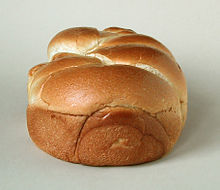Maillard reaction
The Maillard reaction is a chemical reaction between an amino acid and a reducing sugar that gives browned food its distinctive flavor. Seared steaks, pan-fried dumplings, pizzas, cookies, and other kinds of biscuits, breads, toasted marshmallows, as well as many other foods, undergo this reaction.

The reactive carbonyl group of the sugar reacts with the nucleophilic amino group of the amino acid, and forms a complex mixture of poorly characterized molecules responsible for a range of aromas and flavors. At higher temperatures, caramelization and subsequently pyrolysis become more pronounced. In other words, sugar and baked things become brown and caramelized due to this reaction.
For example, the Maillard reaction happens when searing a steak.